International Heritage Centre blog
First World War Babies
First World War Babies
Between 1897 and 1972, women seeking admission to Salvation Army homes in the United Kingdom were interviewed at The Salvation Army’s Women’s Social Work (WSW) headquarters in London. Notes of these interviews, along with records of correspondence received, are contained in a series of more than a hundred Applicants’ Secretary’s Interview Books.
This blog started as a study of the cases found in Book No.53, covering the five months from October 1915 to March 1916. In that time 700 women and girls came seeking aid. Of these, more than 400 were maternity cases, and nearly half went on to be admitted to SA homes. These are some of their stories.
In March 1916, Ida Breach of Hastings contacted the WSW’s Applicants’ Secretary’s Department at 280 Mare Street, Hackney, as she was pregnant, having been ‘led astray’ by a soldier. This soldier had evidently been trying to impress Ida, as he styled himself as ‘Second Captain Robinson’ of 1st/9th Battalion of the Hampshire Regiment. Miss Breach might have been less than impressed if she had known that the rank of ‘Second Captain’ had not existed in the British Army since the 1870s! When she left Lorne House maternity home, Ida returned home to Hastings and her baby boy went to a nurse-mother in the same town. The fact that her baby was placed so close, with Ida’s mother paying the required six shillings per week, suggests that she intended to work to keep him. When The Salvation Army investigated they found there was insufficient evidence to bring a court case against the man, who was by then already on a troopship bound for India.
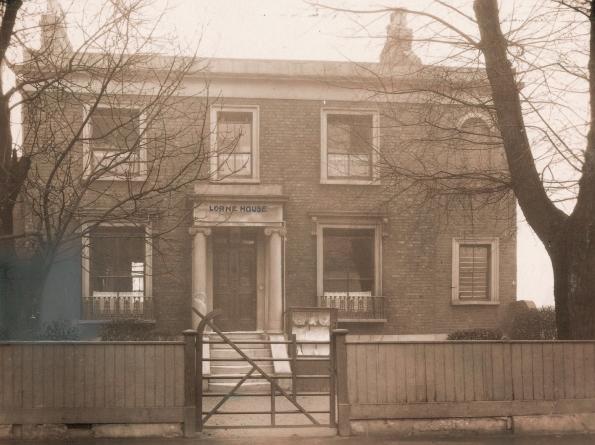
Not all the men found in these records were scoundrels, however. In this period, women were typically referred by Salvation Army officers working in the community or by friends, relatives or by other organisations. On 13th November 1915 our Mare Street office received a letter from a Corporal A Alexander, who was on active service in France, serving with 86th Brigade, Royal Field Artillery. He was writing to ask that we help his ‘young lady’, Miss Margaret Bennett of the village of Westwood, County Durham. While she did not enter one of our homes as a result, it’s an unusual example of a man demonstrating his concern for the woman who was going to have his baby.
In January 1916, Lydia Ward, aged 25, was in domestic service in Thornton Heath, Surrey, when she became pregnant. She named the father of her baby as Tom Press, giving his address as the Guards Depot, Caterham, where he was undergoing his sixteen weeks basic training. The Commonwealth War Graves Commission database shows that Private Thomas Charles Press of 2nd Battalion, Grenadier Guards died in France on 20th September 1916. The French village of Lesboeufs was attacked by the Guards Division on 15th September 1916, the 2nd Battalion suffering seventy-nine men killed that day, the second highest day’s losses for the battalion in the entire war. Tom’s was the only death on a day when the battalion does not appear to have been in action. Also, while the majority of the battalion’s dead from the battle for Lesboeufs are buried in the Guards' Cemetery near the village, or commemorated on the famous Thiepval Memorial, Tom is buried in Grove Town Cemetery, Meaulte, ten miles behind the front line. Since this area was home to two British Army Casualty Clearing Stations, this would seem to indicate that he had been wounded during a previous day’s fighting and died of his wounds on 20th September.
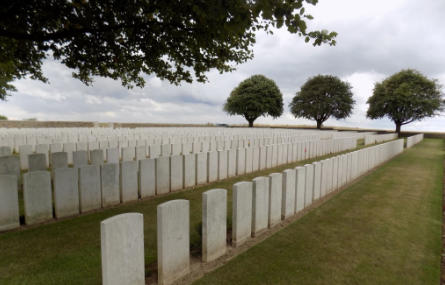
Twenty-one-year-old Ethel Short entered Brent House, Devonshire Road, Hackney in January 1916. Amongst the information recorded in her entry is the fact that the father of her child had ‘promised marriage’. This was not uncommon, and in fact more than forty such promises are recorded in this single volume. Much less common is what happened on 29th November 1917, when the now Private Reginald Chaltor Webley married Ethel Short, both of Portobello Road, in Kensington Register Office.

But not all putative fathers were soldiers. When thinking of the First World War most people think of men being conscripted to fight, but conscription did not start until January 1916. Just 30% of men in this volume are identified as soldiers, and all of these would have been volunteers.
On 25th January 1916 twenty-nine-year-old Gertrude Spain came seeking help. For nearly four years she had been in domestic service in a grand house in Richmond, Surrey, earning £25 a year, considerably above the average for other women in similar work, and probably reflecting the affluence of the household she had been part of. Typically women would arrive four or five weeks before their baby was due, but Gertrude almost left it too late to seek our assistance, and had to be taken straight from the interview to The Salvation Army Mothers’ Hospital, Clapton, where she gave birth to a baby girl, whom she named Ellen.
Gertrude 'only knows the man's name was 'Arthur' working at [the] War Office' and that he was 45 years of age. The record reveals that ‘… [she] will probably return to [her] situation at Richmond’, and she may well have done but unfortunately Gertrude’s discharge record has not survived.
And not all the men were British either. Twenty-four-year-old Dorothy Murray, also known as ‘Dolly’ because of her small stature, a tailor’s assistant from Camden Town, entered Brent House, Devonshire Road, Hackney on 9th February 1916. (There is a note to the effect that three days later she ‘ran away’, although it’s not clear why, since entry to the hospital was entirely voluntary.) She identified the father of her child as Otto Schreiber, a German anarchist she had been living with in Soho for some years, and by whom she already had a son, aged three. Otto had been arrested as an ‘enemy alien’ some time in 1915, despite his long-standing opposition to Germany’s militarist regime, and been sent to the Knockaloe internment camp on the Isle of Man. He died there on 10th December 1917, one of 250 deaths in the camp during the war. Today his remains lie in the Cannock Chase German Military Cemetery, a supreme irony for a staunch opponent of militarism in general and the Kaiser’s regime in particular.
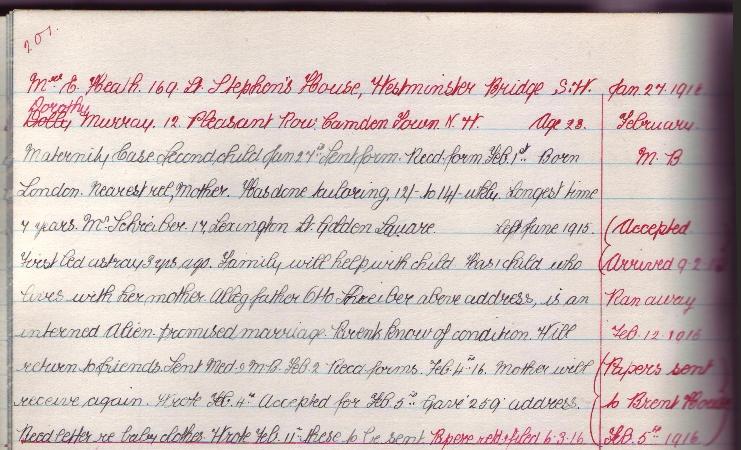
Kevin
November 2016
Read other blogs from the Heritage Centre

Conserving the Leeds Guardian Home papers
In 2013, I opened a box of records that had come to us after many years spent in various unsuitable storage locations...
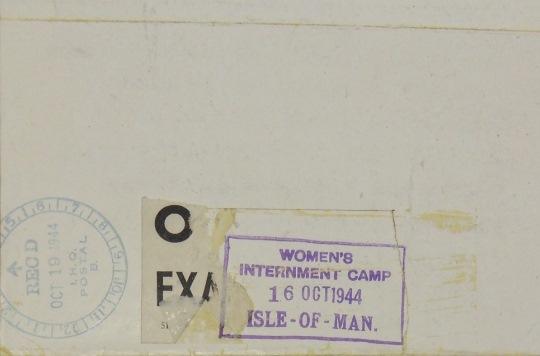
‘…behind the barbed wires’: internment on the Isle of Man
Explore the letters of officers Lieutenant-Colonel Walter and Esther Busse, interned as 'Enemy Aliens' for over five years during the Second World War...
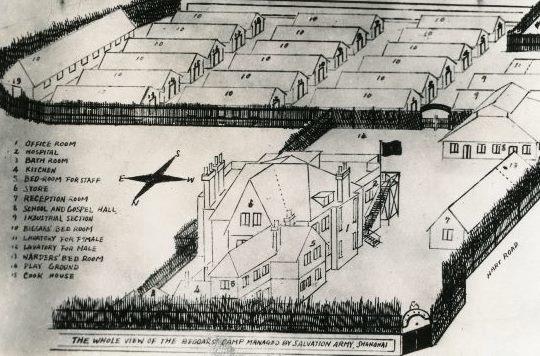
'Receive, reform, regenerate, restore': Beggars' Town, Shanghai
One of our files from China comprises photographs of a settlement in Shanghai known as Beggars' Town ...
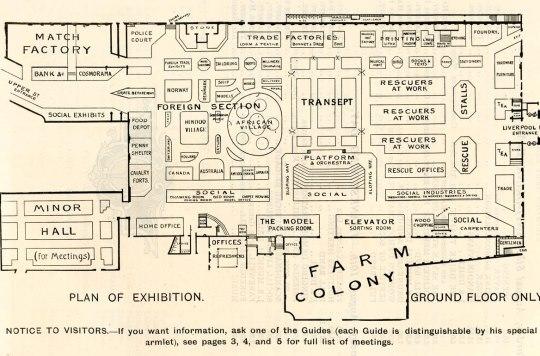
A contextual complexity: the Special Efforts Department
Exploring the work of a department for which no administrative papers have survived...